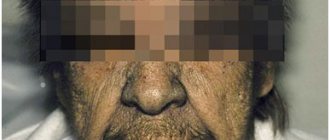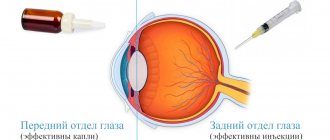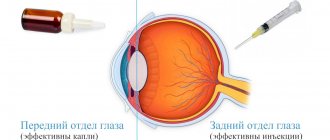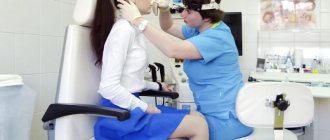Antiprotozoal drugs are a group of synthetic chemotherapy drugs that are used to treat infectious diseases caused by protozoa (protozoal infections).
Protozoa are a special class of microorganisms that differ from bacteria, fungi and viruses in their structure and function. Relatively speaking, protozoa occupy an intermediate position between bacteria and animals and combine the properties of both bacterial and animal cells.
Many protozoa have adapted to living in the human body, causing so-called protozoal infectious diseases.
The most common protozoa that cause protozoal infections in humans include:
- Plasmodium falciparum (causes malaria);
- dysenteric amoeba (causes amebic dysentery, liver amoebiasis);
- trichomonas (causes trichomoniasis, a sexually transmitted disease in men and women);
- Giardia (causes giardiasis of the intestines, gall bladder, giardia cholecystitis);
- leishmania (causes leishmaniasis of the skin and internal organs);
- toxoplasma (the causative agent of toxoplasmosis);
- trypanosoma (causes sleeping sickness - African trypanosomiasis or "sleeping sickness", as well as Chagas disease - American trypanosomiasis).
Some protozoa can be directly transmitted from person to person (for example, Trichomonas through sexual contact, amoeba and lamblia through dirty hands, drinking water or food contaminated with the feces of a sick person). Other protozoa require an intermediate host to enter the human body (mosquitoes and mosquitoes for Plasmodium falciparum and leishmania, cats for Toxoplasma, tsetse flies and bedbugs for trypanosomes).
The clinical manifestations and symptoms of protozoal infections are very diverse and depend primarily on the target organ, which is primarily affected by the protozoa. This may include severe diarrhea (diarrhea), fever, abdominal pain, genital discharge, skin ulcers, severe drowsiness, etc.
Taking into account the peculiarities of their effect on various protozoa, antiprotozoal drugs are divided into two broad groups:
- Drugs for the treatment of malaria.
- Preparations for the treatment of amebiasis, trichomoniasis, leishmaniasis and other protozoal infections.
Let us consider in detail the drugs for the treatment of amoebiasis, trichomoniasis, leishmaniasis and other protozoal infections.
Classification of antiprotozoal drugs
Antiprotozoal drugs are classified into:
- drugs for the treatment of amebiasis: nitroimidazole derivatives (metronidazole, tinidazole, ornidazole), hydroxychloroquine derivatives (chloroquine, tiliquinol + tiliquinol N-dodecyl sulfate + tilbroquinol);
- drugs for the treatment of trichomoniasis: nitroimidazole derivatives (metronidazole, tinidazole, ornidazole), nitrofuran derivatives (furazolidone);
- drugs for the treatment of toxoplasmosis: sulfonamide drugs and their combinations (pyrimethamine + sulfanidiazine, pyrimethamine + sulfadimidine, pyrimethamine + sulfadoxine, co-trimoxazole), antibiotics of the lincosamide class (clindamycin) and macrolides (spiramycin);
- drugs for the treatment of giardiasis: nitroimidazole derivatives (metronidazole, tinidazole, ornidazole), nitrofuran derivatives (furazolidone, nifuratel);
- drugs for the treatment of leishmaniasis: pentavalent antimony preparations (meglumine antimonate);
- drugs for the treatment of trypanosomiasis: African trypanosomiasis - suramin, eflornithine, melarsoprol; American trypanosomiasis – nifurtimox, benznidazole.
Choosing the optimal drug for the treatment of trichomoniasis
IN
The causative agent of urogenital trichomoniasis is Trichomonas vaginalis (
Trichomonas vaginalis
), an aerotolerant anaerobe from the order of protozoa, class Flagellates.
Trichomonas is a unicellular microorganism, often pear-shaped, at the anterior end of the body of which there are 4 free flagella enclosed under the outer shell; the fifth flagellum forms the edge of the undulating membrane along the body of the microorganism. Due to the movements of the flagella, Trichomonas is very mobile and plastic. Notable is its ability to form pseudopodia, masking the movements of the flagella and leading to slow amoeboid locomotion (amoeboid form). In this form, Trichomonas can merge so much with the relief of epithelial cells that their microscopic diagnosis becomes very difficult. Trichomonas vaginalis
parasitize epithelial cells and are capable of phagocytosis in whole or in part. Since Trichomonas do not produce exotoxin, damage to the “host” cells occurs only upon direct contact.
Once in the genitourinary tract, after an average of 3–7 days, Trichomonas cause the development of inflammation in the form of acute, subacute or torpid urethritis (urethroprostatitis) in men and vulvovaginitis and urethritis in women. As a rule, the process initially occurs in the form of an acute or subacute form, then after 2 months the inflammatory reaction subsides and trichomoniasis becomes chronic or trichomonas carriers.
The clinical picture of genitourinary trichomoniasis is nonspecific. Trichomonas can affect any organs of the urogenital tract; the process can also be localized on the mucous membrane of the tonsils, conjunctiva, and rectum. It should be noted that, as a monoinfection, trichomoniasis occurs only in 10–30% of patients [1]. In 70–80% of cases, urogenital trichomoniasis is associated with other microorganisms, including sexually transmitted infections [5]. Most often recorded are trichomonas-gonorrheal, trichomonas-bacterial (in association with enterococci, hemolytic streptococci, Staphylococcus epidermidis), as well as trichomonas-mycotic infections. It is important that in case of mixed infection, Trichomonas is a reservoir of concomitant infection, therefore, due to intratrichomonas persistence, gonococci, chlamydia, etc. are invulnerable to antibiotics, which leads to relapse of the disease.
The clinical picture of urogenital trichomoniasis is no different from any other sexually transmitted infection.
The above makes the diagnosis of trichomoniasis especially relevant. It should be noted right away that the diagnosis of trichomoniasis
in men it is less informative than in women, since in male smears of urethral discharge there is much less pathogen, and moreover, sedentary and atypical forms predominate. As for the diagnostic methods themselves, they are all aimed at detecting Trichomonas in native or stained methylene blue, brilliant green or Gram smears, swabs, as well as in cultures on SKDS, Diamond, etc. media. Conflicting data on the use of serological diagnostic methods trichomoniasis (latex agglutination, RSC, RIF) do not allow us to clearly recommend them for use in everyday practice. The main problem in the diagnosis of trichomoniasis is the morphological variability of the pathogen. Detection of typical flagellated motile forms, as a rule, does not cause difficulties, however, immobile amoeba-like forms merging with epithelial cells require the highest professionalism from the doctor.
Therapy of urogenital infections
always remains a relevant and discussed problem in dermatovenerology, obstetrics and gynecology, and urology.
With regard to trichomoniasis, the main subject for discussion is the treatment of mixed infections, as well as the choice of the optimal antiprotozoal drug. Since, due to incomplete phagocytosis, Trichomonas is often the main cause of failure in STI therapy, in case of associated infections it is necessary to first carry out pulse therapy for trichomoniasis
. For this purpose, there is a large arsenal of fast-acting and effective antiprotozoal agents. All recommended drugs belong to the nitroimidazole group. The ancestor (however, has not lost its significance to this day) is metronidazole. According to the World Health Organization (2001), a single dose of 2.0 g of this drug leads to cure in 88% of women, and with joint treatment of sexual partners, a positive effect is achieved in 95% of cases. Tinidazole has the same high efficiency. As a rule, a single dose of 2.0 g orally is sufficient for cure. The most modern and effective antiprotozoal drugs are ornidazole and secnidazole: a single dose of 1.5 g or 2.0 g, respectively, guarantees elimination of the pathogen in almost all patients with uncomplicated trichomoniasis. Single pulse courses of therapy are also convenient for treating sexual partners. However, the frequent absence of clinical symptoms or its minimal manifestations, low leukocytosis do not allow one to reliably determine the timing of infection, and it is quite problematic to exclude damage to the paraurethral glands, prostate, etc. by Trichomonas. In this regard, we recommend using the above drugs in prolonged courses of 5–10 days. For a course of systemic treatment, other drugs of the nitroimidazole group can be used: nimorazole and nifuratel.
In recent years, an increasing number of methodological recommendations, guidelines, and standards for the treatment of STIs have appeared in Russia. All of them are based on a large amount of clinical material, and they are produced by leading dermatovenerological institutions, the Association of Obstetricians and Gynecologists. There are also international European recommendations and WHO recommendations. All of them are built on the same principle and offer both recommended treatment regimens and alternative ones.
According to WHO, the recommended treatment regimens for trichomoniasis are metronidazole or tinidazole in a single dose of 2.0 g
. An alternative is to use the same drugs 500 mg 2 times a day for 5–7 days. US experts present similar data, placing metronidazole in first place - 2.0 g once.
According to European recommendations, the optimal way to treat trichomoniasis is to take metronidazole for 7 days, 500 mg every 8 hours.
In the domestic “Guidelines for the diagnosis and treatment of the most common sexually transmitted infections and skin diseases”, approved by the Ministry of Health of the Russian Federation and developed by TsNIKVI [3], the first place is occupied by a single dose of 1.5 g of ornidazole or tinidazole 2.0 g orally
The same regimens are proposed by the Russian Association of Obstetricians and Gynecologists in the “Methodological recommendations for the diagnosis and treatment of the most common sexually transmitted infections and associated diseases,” where regimen No. 1 is a single dose of ornidazole, the next regimen is a single dose of tinidazole. As alternatives, the same ornidazole 500 mg every 12 hours for 5 days, metronidazole 500 mg 2 times a day (7 days), as well as nimorazole, secnidazole and nifuratel in standard dosages are proposed,
So, how to choose the optimal antiprotozoal drug? According to international experience, as well as data from some domestic researchers, this is metronidazole.
However, not everything is so simple. As for the effectiveness when following the doctor’s recommendations and simultaneously treating sexual partners, it is approximately the same for all drugs (all nitroimidazole derivatives). In terms of ease of use, all drugs are also similar, but as for side effects, then, according to our own data and literature data, the tolerability of ornidazole and secnidazole is somewhat better than that of metronidazole.
When taking the latter, dyspeptic disorders, headaches, insomnia, and allergic reactions are more often observed than with other drugs in this group.
Ginocaps forte
Pharmacodynamics The pharmacological activity of the drug Ginocaps Forte is due to the complex action of its components - metronidazole and miconazole nitrate. The drug has antifungal, antiprotozoal and antibacterial effects. Metronidazole is an antimicrobial and antiprotozoal agent, a derivative of 5-nitroimidazole. The mechanism of action is the biochemical reduction of the 5-nitro group of metronidazole by intracellular transport proteins of anaerobic microorganisms and protozoa. The reduced 5-nitro group of metronidazole interacts with the DNA of microbial cells, inhibiting the synthesis of their nucleic acids, which leads to the death of bacteria. Active against Trichomonas vaginalis, Gagdnerella vaginalis, Giardia intestinalis, Entamoeba histolyca, Lamblia spp., as well as obligate anaerobes Bacteroides spp. (including Bacteroides fragilis, Bacteroides distasonis, Bacteroides ovatus, Bacteroides thetaiotaomicron, Bacteroides vulgatus), Fusobacterium spp., Veillonella spp., Prevotella (Prevotella bivia, Prevotella buccae, Prevotella disiens) and some gram-positive microorganisms (Eubacter spp. ., Clostridium spp., Peptococcus spp., Peptostreptococcus spp., Mobiluncus spp.). Aerobic microorganisms are insensitive to metronidazole. Miconazole is an antifungal agent that inhibits the synthesis of ergosterol in the cell membrane. Active against dermatophytes, yeast and some other fungi. Shows antimicrobial activity against gram-positive microorganisms. Eliminates itching that usually accompanies fungal infections. When used intravaginally, it is active mainly against Candida albicans. Pharmacokinetics Absorption The pharmacokinetics of the active components of Ginocaps forte vaginal capsules have not been studied. According to the literature, the bioavailability of metronidazole when administered intravaginally does not exceed 20% of the level of absorption into the systemic circulation when taking the same dose of metronidazole orally. Systemic absorption of miconazole nitrate when administered vaginally is low (approximately 1.4% of the dose). Metabolism and elimination Metronidazole is metabolized in the liver by hydroxylation, oxidation and glucuronidation. The activity of the main metabolite (2-oxymetronidazole) is 30% of the activity of the parent compound. T1/2 of metronidazole is 6-11 hours. Excreted by the kidneys - 60-80% of the dose of the systemic drug (20% of this amount unchanged). The metabolite of metronidazole, 2-hydroxymetronidazole, colors urine red-brown due to the presence of a water-soluble pigment formed as a result of the metabolism of metronidazole. The intestines excrete 6-15% of the dose of the systemic drug. Penetrates into breast milk and most tissues, passes through the blood-brain barrier and placenta. Miconazole is metabolized in the liver to form inactive metabolites. Miconazole overcomes histohematic barriers poorly and practically does not penetrate into the CSF. 8 hours after using the drug, 90% of miconazole is still present in the vagina. Unchanged miconazole is not detectable in either plasma or urine.







